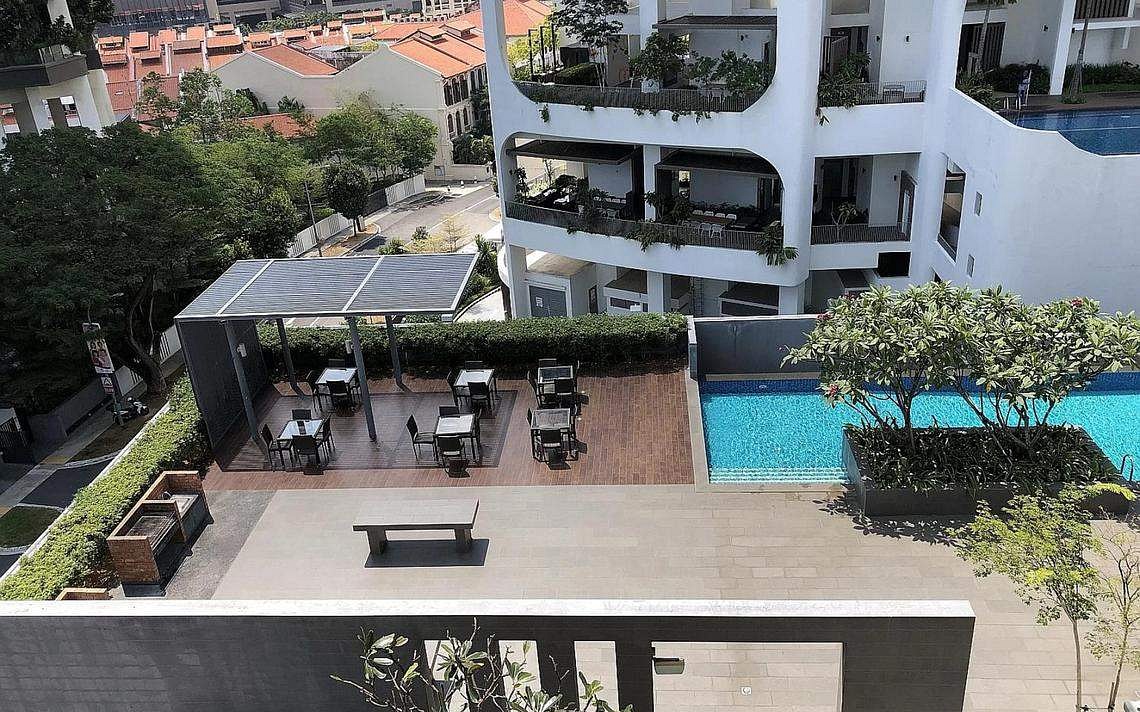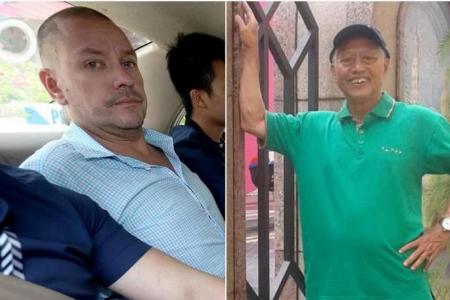Condo killer litter: Man who threw bottle that killed grandfather has jail term cut by 6 months
An Australian man who flung a wine bottle from the seventh storey of a condominium that hit a grandfather who later died, had his jail term reduced on appeal.
Andrew Gosling, 50, had been sentenced to five years and six months’ jail on April 8 in what the prosecutors had described as offences that demonstrated hostility towards Muslims and were religiously aggravated.
On Tuesday, Justice Chua Lee Ming said that looking at all the facts and circumstances of the case, the sentence should not exceed the maximum sentence for rash act causing death, which is five years.
He then cut Gosling’s sentence by six months.
Gosling had on Aug 18, 2019, flung a glass wine bottle from the seventh storey of Spottiswoode 18 in Spottiswoode Park Road, at a group of Malay-Muslims having a barbeque.
The bottle hit the head of delivery driver Nasiari Sunee, 73, a grandfather of nine, then hit the right shoulder of his wife, Madam Manisah Sitri, 69, whose right arm had to be in a sling for about two months.
Gosling had pleaded guilty in February, this year, to committing a rash act that led to Mr Nasiari’s death.
He had also admitted to causing grievous hurt to Madam Manisah by rash act.
He was sentenced to four years’ jail for the rash act causing death charge and 18 months for causing grievous hurt.
Principal District Judge Victor Yeo then ruled that the sentences for the two charges should run consecutively, for the total sentence to be five years and six months’ imprisonment.
On Tuesday, Gosling appeared before the High Court on video link with a shaved head.
HIs lawyer, Senior Counsel Sreenivasan Narayanan, argued that Gosling’s sentence for the two charges he was convicted of should run concurrently instead of consecutively, since the offences occurred as a result of a single act of throwing the bottle.
Mr Sreenivasan said the offences were committed from one transaction and a single state of mind.
Justice Chua asked the defence counsel if it was right that Gosling be punished once for the offences.
Mr Sreenivasan replied that the sentencing judge must find a justification for why the offence was not a single transaction. Or even if it was a single transaction, the judge must explain the reason for ignoring the single transaction rule.
Justice Chua said he could not accept that since the one transaction rule gives the court discretion on when to apply it.
The one transaction rule provides that when two or more offences are related, the punishment should form part of a single transaction so that the accused is not doubly punished for what is essentially the same conduct.

Deputy Public Prosecutor Ben Mathias Tan also highlighted that the two victims represented separate legally protected interests.
He said: “When we look at the invasion of bodily interest, it is victim specific. The harm caused by the two offences is distinct, not part of the same unity.”
Mr Sreenivasan also took issue with the district judge for not placing enough weight on the fact that two experts had said Gosling’s attack on the Malay-Muslim group was a result of his obsessive thoughts when he drank and did not convey his true feelings.
He said: “Each link of the chain is weak and yet the cumulative effect is a sentence that exceeded the maximum of the most serious charges.”
The DPP countered that Gosling acting after he voluntarily consumed excessive amounts of alcohol was an aggravating factor.
Mr Sreenivasan also argued it was not right for the district judge to apply the aggravating factors of religious hostility and intoxication twice for each offence as well as to justify the sentences running consecutively.
The DPP said the defence counsel arguing that one cannot apply the same aggravating factors to two offences is not the law. If this were the case, it would extend to accused persons not being allowed to use the same mitigating factors for separate offences.
Justice Chua disagreed with the defence that the one transaction rule should apply in this case, but dismissed the prosecution’s point that it should not hold because there were two victims.
However, the judge found that on a sentence of more than the maximum for the more serious charge would not meet the ends of justice.
Get The New Paper on your phone with the free TNP app. Download from the Apple App Store or Google Play Store now


